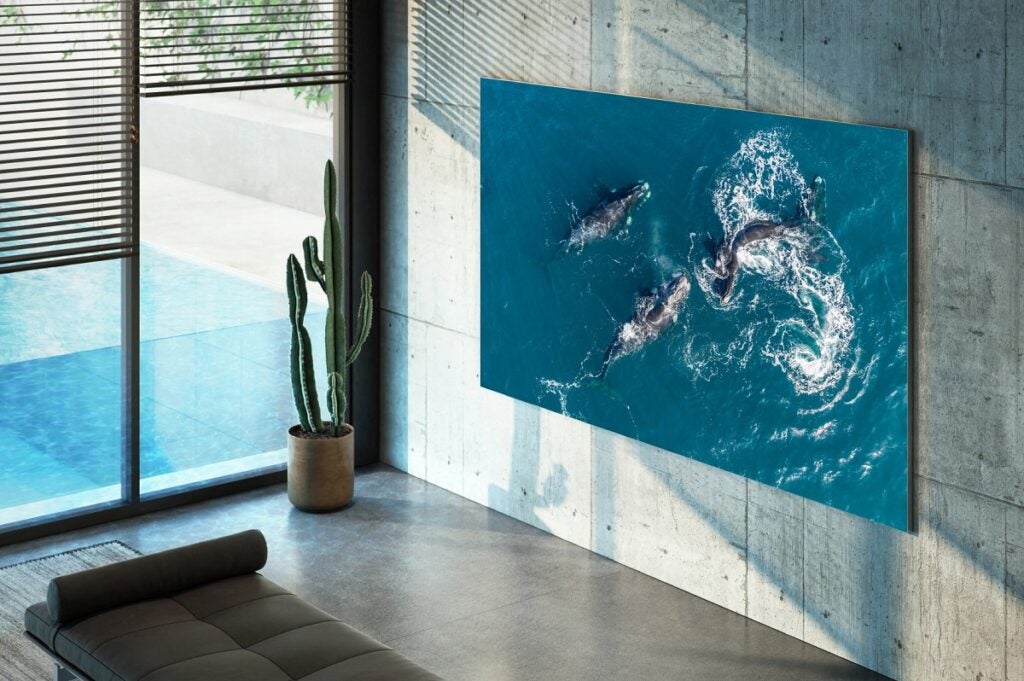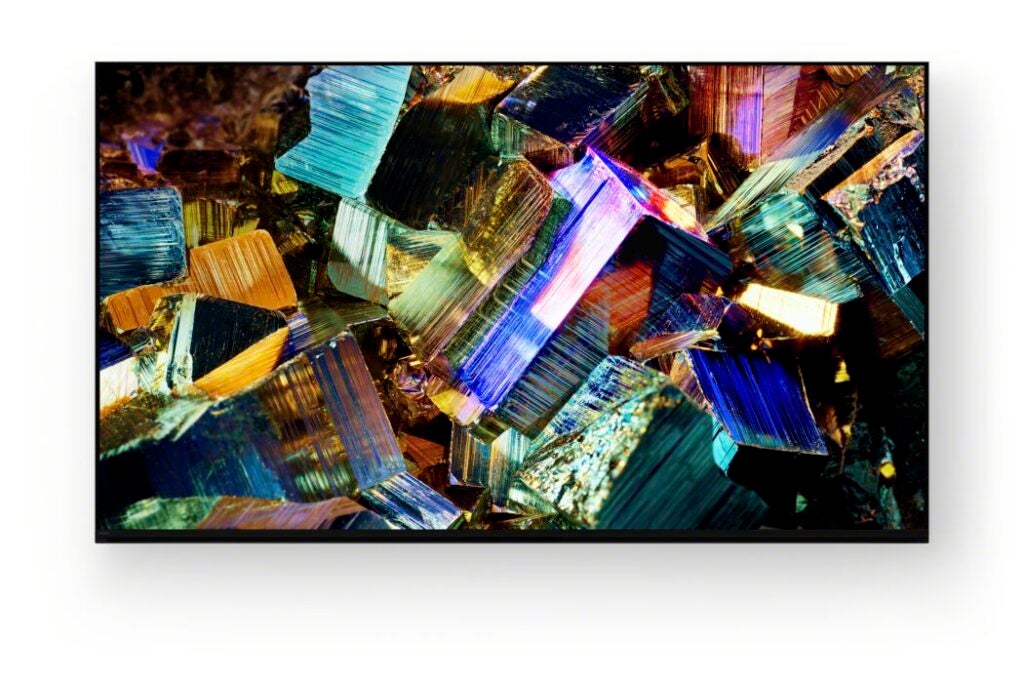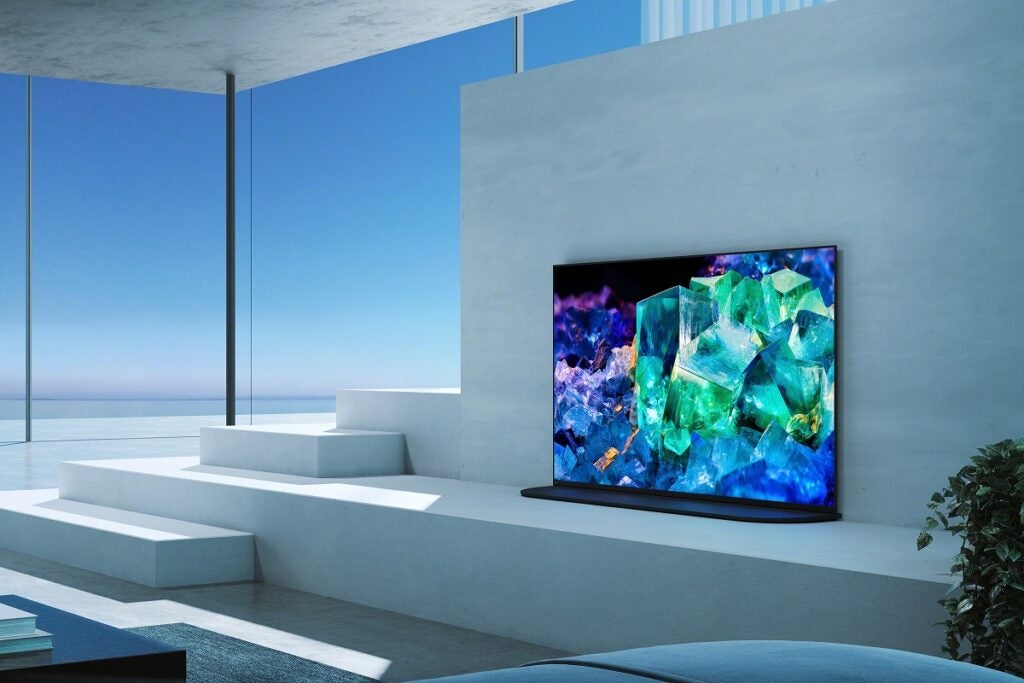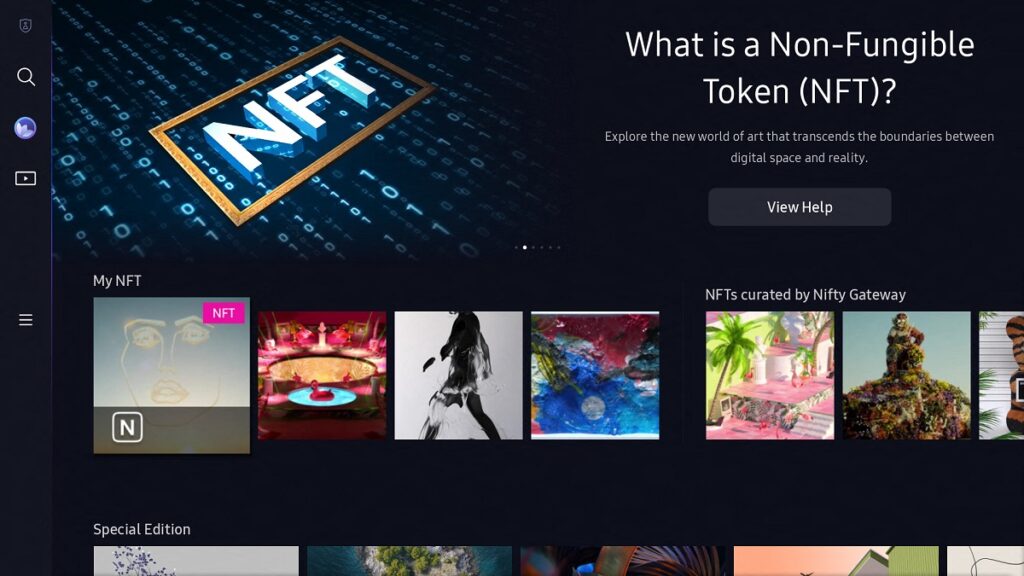CES 2022: Samsung vs Sony TVs
OPINION: CES returned to the floors of the Las Vegas Convention Centre as manufacturers from effectually the world unveiled products that were coming in 2022.
Nosotros'll be focusing on Samsung and Sony TVs in this slice, comparing what they have in store. The gist is that each brand looks to follow their own philosophies, so while at that place are areas of overlap the results could exist fascinatingly dissimilar.
What was announced?

Samsung revealed new models of its Neo QLED, MICRO LED, and lifestyle TVs. The biggest takeaways were improvements to the Neo Quantum processor to wring out more brightness, depth, and contrast, while the OTS (Object Tracking Sound) Pro organization now supports Dolby Atmos through new integrated up-firing speakers.
There'south now an 89-inch option for MICRO LED model, and all the 2022 MICRO LEDs back up xx-bit greyscale depth to extract more detail and offer meliorate control of brightness and colour to fully express HDR content. The MICRO LEDs tin can also play Dolby Atmos sound from its speakers.
New Frame, Serif and Sero TVs were appear, calculation anti-glare, anti-reflection, and anti-fingerprint properties to their screens. Samsung's Smart Hub will be spruced up with the introduction of a gaming hub, new Watch Together characteristic, NFT platform and smart calibration picture tool.

Sony's announcement of its upcoming TVs was all-encompassing, merely the primary news were the announcement of QD-OLED and Mini LED TVs. Mini LED will come in 4K and 8K guises, while the A95K QD-OLED comes in 55-, and 65-inch sizes. Both Samsung and Sony are launching QD-OLED models, but the Japanese electronics behemothic announcement was first out of the gate.
The 360 Spatial Sound Personalizer works in tandem with BRAVIA XR TVs for an optimised spatial sound feel with compatible Sony neckband speakers and headphones, and the new BRAVIA CAM recognises where people are in a room to optimise picture and audio accordingly.
Sony'due south video streaming BRAVIA CORE has a new Calibrate Style that automatically adjusts the movie settings, while Sony and Netflix have collaborated on an Adaptive Calibrated Way for the Netflix app. Information technology achieves a similar goal of optimising on the wing for the best picture operation at any moment.
Where are the key areas going to be?

QD-OLED or QD Display. QD-OLED merges aspects of OLED and Breakthrough Dot LCD technology into one panel that can produce deep black levels, high contrast ratios and a wider coverage of the colour gamut. Effulgence is said to be college than a traditional OLED, with peak brightness thought to be around the 1500 nit range.
Samsung and Sony are both releasing QD-OLED TVs, and information technology'll be interesting to run across how they utilise their own technologies within the panel to differentiate from one some other. Information technology'll also be interesting to see how much they cost. Online gossip suggest they'll be expensive.
Samsung and Sony are also going toe-to-toe with their Mini LED sets, with both bringing 4K and 8K models to the market place. Samsung has more models in its line-up while Sony is only releasing ii (Z9K 8K Television receiver and X95K). Both brands have an affinity for pushing HDR effulgence, but which will offer the better local dimming performance?
What's new about the upcoming TVs?

Samsung's Smart Hub has been revised, putting content curation and discovery at its forefront. Divide into dissimilar sections, of about involvement is the Gaming Hub that offers admission to titles from Google Stadia and Nvidia GeForce NOW. Samsung is dabbling in the NFT market for purchasing digital artwork, and it'southward an area where they could become a leg-up over rivals, though the presence of NFTs could show divisive.
While the likes of LG and Samsung accept pursued a more personalised approach to their interfaces, Sony is focusing on picture and sound optimisation. There are new calibrated modes for BRAVIA Cadre and Netflix, while its Ambient Optimization Pro mode tin calibrate the Telly in conjunction with the BRAVIA CAM. And there'south the new 360 Spatial Sound Personalizer that presents an optimal spatial surround audio. Basically, Sony'due south mantra for 2022 is optimise, optimise and optimise.
Determination
Information technology's far too early to say how the fortunes of Samsung and Sony will turn out, but it'll be interesting to see how their Mini LEDs and QD-OLEDs fare in direct contest. Otherwise, Samsung and Sony tend to plough their own lanes – Samsung's focus on being a TV brand for anyone who wants a screen while Sony caters to a domicile cinema audition. It could be those areas of focus that determines which is the more successful.
You might like…
Source: https://www.trustedreviews.com/opinion/ces-2022-samsung-vs-sony-tvs-4194692
Posted by: sumnerfecied1981.blogspot.com


0 Response to "CES 2022: Samsung vs Sony TVs"
Post a Comment